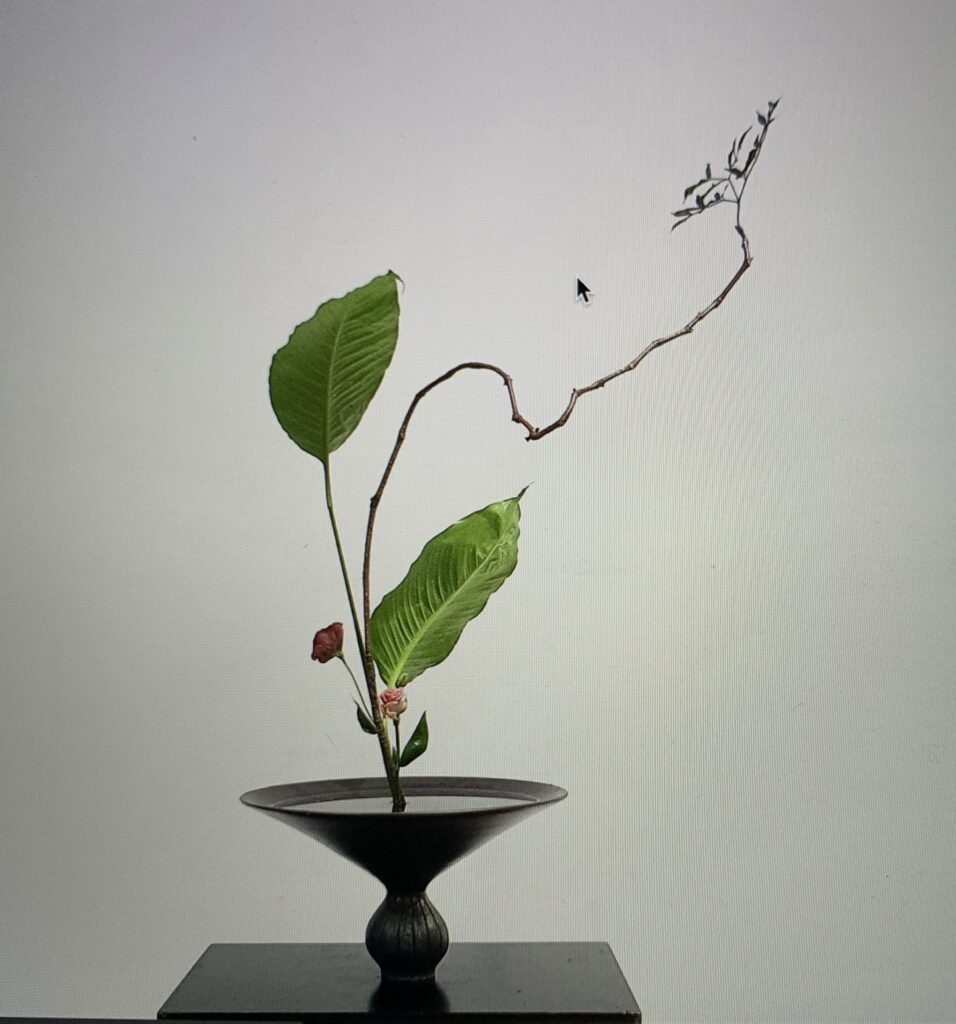In this lesson we will go from one extreme to another. We will create a Shoka Shimputai which has very different rules than Rikka Shimputai. However, using a Shoka Shimputai as a “base” and adding to it to create a Rikka Shimputai will be our own unique challenge.
Here are two examples of taking a Shoka Shimputai, adding to it to make a Rikka Shimputai.




Please read: For Shoka Shimputai
- Invitation to Ikenobo Shoka Shimputai book
- New Shoka II textbook – Page 41
- More to Learn Shoka – Pages 146-159
- Joy of Ikebana Ikenobo – Page 50-69
Please read: For Rikka Shimputai
- Any previous class notes
- More to Learn Rikka – Pages 145-155
Please Bring:
- Only one container – Type A, C, F or G with an opening large enough for a 3″ diameter kenzan or larger. Kenzan with an ashi (stem) is preferred. A more contemporary or slender container is welcome; but no bronzes.
- As we are using only one container and converting our first design of a Shoka Shimputai to a Rikka Shimputai; only one kenzan is needed. Please choose a vase and kenzan that can go from a Shoka Shimputai to a Rikka Shimputai using the same vase and kenzan.
- Pebbles to raise your kenzan to within 1/2 inch of the top edge of your container. Pebbles must be no larger than your little finger nail.
- Line material and flowers will be provided for this lesson; however, you are welcome to bring any materials you would like. Remember, the same materials used in the Shoka Shimputai design will also be repeated in the Rikka Shimputai
- Check the Resources page of this website for a list of what to bring to class
- Your lunch or a snack.
We arrive at 9:15 AM, set up for class and make any necessary ginza purchases. The lesson begins at 9:30 AM and you are generally on your way home by about 2PM. Bring a lunch or snack to enjoy.
There will be a definitive break between the 1st and 2nd arrangements at about noon to allow everyone the opportunity to watch the critiques of all the arrangements and everyone the chance to have a snack break.
Please do not take your arrangement apart until all arrangements have been critiqued. If you need to leave before all arrangements have been critiqued, you will not get credit for the lesson. Plan your time accordingly.
There will be a definitive break between the 1st and 2nd arrangements at about 1PM to allow everyone the opportunity to watch the critiques of all the arrangements and everyone the chance to have a snack break.
Please do not take your arrangement apart until all arrangements have been critiqued. If you need to leave before all arrangements have been critiqued, you will not get credit for the lesson. Plan your time accordingly.
